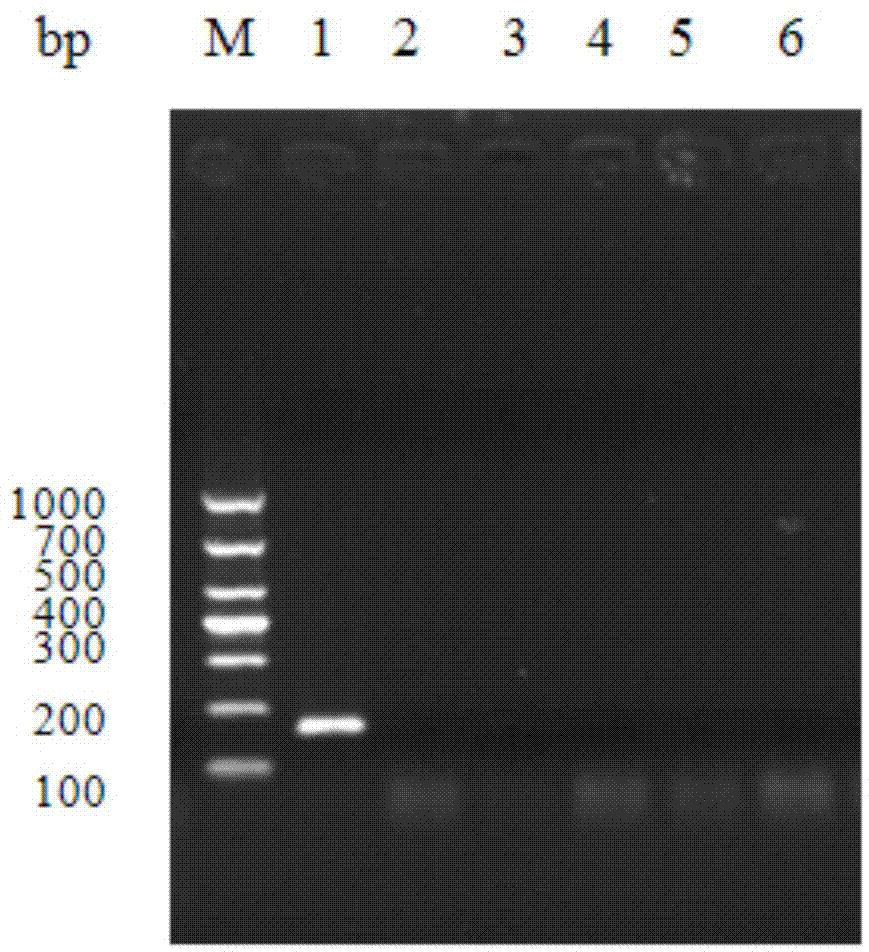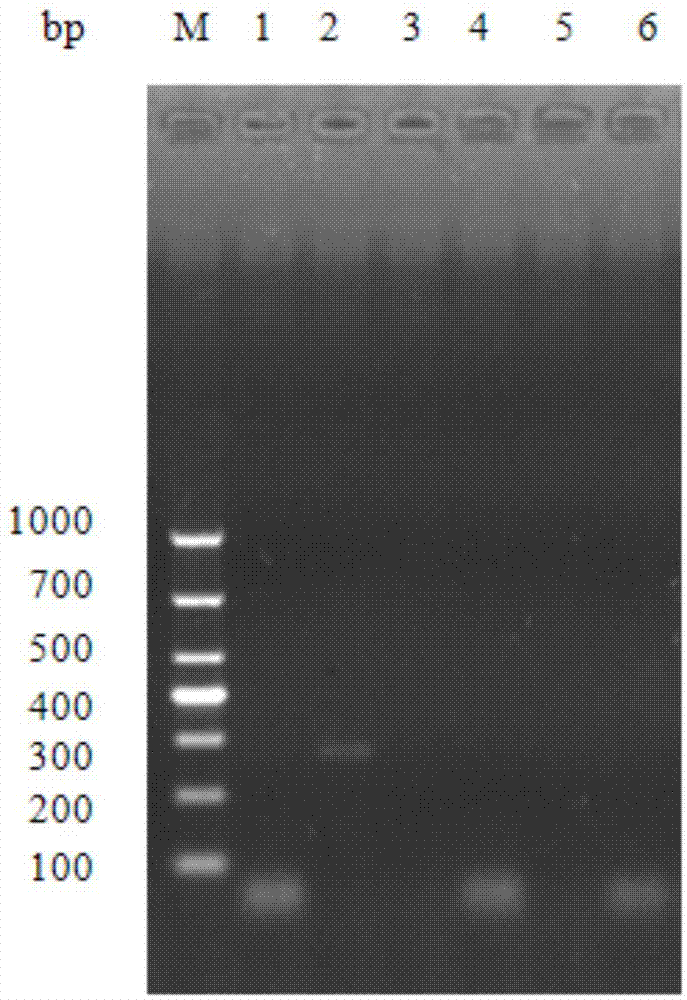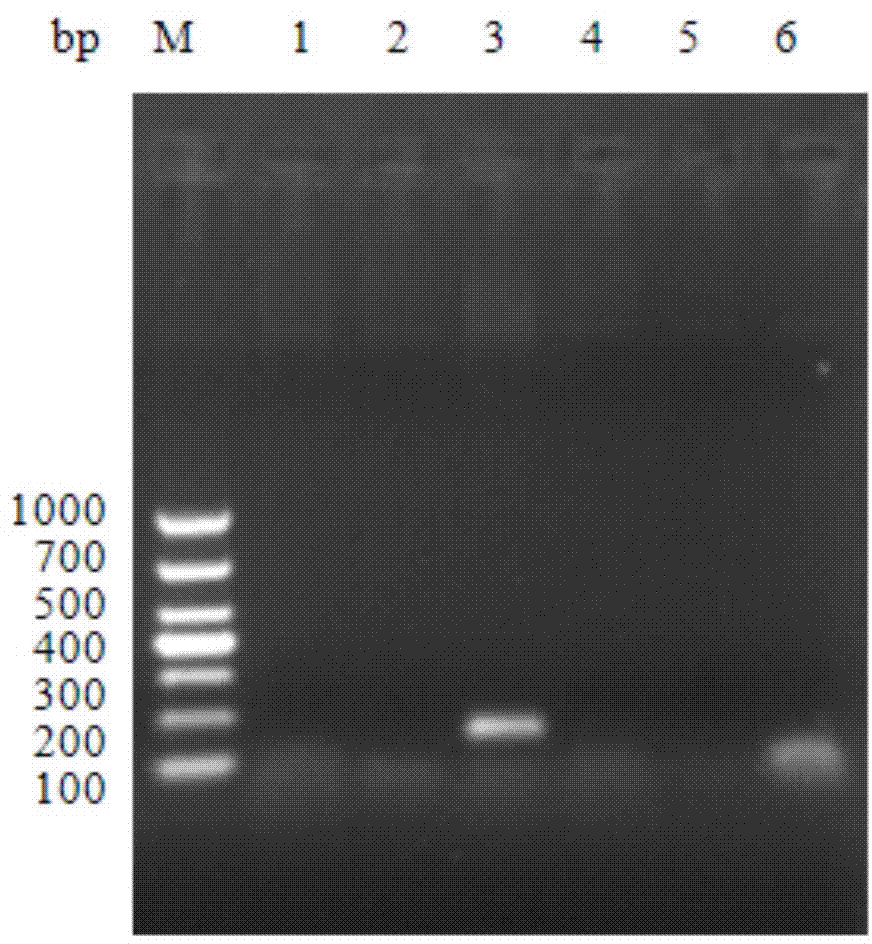Primer pair and kit for identification or assisted identification of stored bean weevils
A technology for auxiliary identification and primer pairs, which is used in the determination/inspection of microorganisms, biochemical equipment and methods, DNA/RNA fragments, etc. strong effect
- Summary
- Abstract
- Description
- Claims
- Application Information
AI Technical Summary
Problems solved by technology
Method used
Image
Examples
Embodiment 1
[0058] The design of embodiment 1 specific primer pair
[0059] By searching and querying the mtDNA CO Ⅰ sequences of Pimus chinensis, Culophorum sinensis, Vicia fabae, Rhizophyllum spp. Specific primers were manually designed for the sequence, and the primers were evaluated with Oligo software to check the primer Tm value, GC%, mismatch, dimer and hairpin structure, etc., and the homologous sequences were checked with the Blast program in GenBank.
[0060] The 5 pairs of primers designed are shown in Table 1:
[0061] Table 1 is the specific primer sequence
[0062]
Embodiment 2
[0063] The identification of embodiment 2 bean weevil
[0064] 1. Extraction of soybean elephant DNA
[0065] Genomic DNA was extracted by salting-out method from single-headed Elephant, including Elephus piscifolia, Elephus four-striped, Elephus faba, Elephus beanus and Elephus mung bean. The above species of bean weeds were all confirmed by morphological characteristics.
[0066] Grind it into a powder in a 1.5ml centrifuge tube with liquid nitrogen, and quickly add 300μL TNES (50mM Tris, pH7.5, 400mM NaCl, 20mM EDTA, 0.5% SDS) and 100μg / mL proteinase K, in Incubate at 37°C for 4 h; add 85 μL of 5M NaCl, shake vigorously for 15 s, and centrifuge at 14,000 rpm for 5 min; take the supernatant, add an equal volume of ice-cold absolute ethanol, and mix gently; centrifuge at 14,000 rpm for 5 min, and wash once with 70% ethanol. The precipitate was dried at room temperature, and an appropriate amount of 50 μL sterile water was added to dissolve the extracted DNA. Then, they wer...
Embodiment 3
[0078] Sensitivity detection of embodiment 3 specific primer pairs
[0079] The numbering obtained in embodiment 2 is carried out serial dilution with distilled water respectively to obtain in the embodiment 2 and be numbered 1-5 and be the picamophora, four-striped bean elephant, broad bean elephant, common bean elephant and mung bean elephant genomic DNA to carry out serial dilution with distilled water, obtain 5 kinds of dilutions; Genomic DNA concentrations were: 50ng / μl, 25ng / μl, 10ng / μl, 5ng / μl, 1ng / μl, 0.5ng / μl, 0.1ng / μl, 0.05ng / μl. Each dilution was used as a template (water was used as a negative control), and the above-mentioned 5 pairs of specific primers were used for PCR amplification of its specific species.
[0080] The PCR reaction system is as follows (25 μL): 10×buffer (containing Mg 2+ ) 2.5 μL, 2.5 mM dNTP 2.5 μL, 10 μM primers (upper and downstream primers) 1.0 μL each, 2.5 U / μL Taq enzyme 0.2 μL, genomic DNA 1 μL, ddH 2 O 16.8 μL.
[0081] PCR reaction...
PUM
| Property | Measurement | Unit |
|---|---|---|
| Sensitivity | aaaaa | aaaaa |
| Sensitivity | aaaaa | aaaaa |
Abstract
Description
Claims
Application Information
 Login to View More
Login to View More - R&D
- Intellectual Property
- Life Sciences
- Materials
- Tech Scout
- Unparalleled Data Quality
- Higher Quality Content
- 60% Fewer Hallucinations
Browse by: Latest US Patents, China's latest patents, Technical Efficacy Thesaurus, Application Domain, Technology Topic, Popular Technical Reports.
© 2025 PatSnap. All rights reserved.Legal|Privacy policy|Modern Slavery Act Transparency Statement|Sitemap|About US| Contact US: help@patsnap.com



